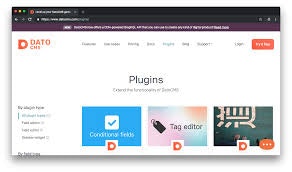

This is especially useful for large sections of content like blog posts. Structured text is quite a new feature for rich text which gives you a lot of flexibility in a single field including adding models and blocks inside your rich text content.I will take you through an example in the next section. For the most part, these work the same as models, but the differences require some thought as to when you should use links or modular content. Modular content works the same way as links except instead of referencing other models, you will link to blocks from your Blocks Library.You can link to one or more of the same model or various different types for a dynamic layout on your page. The Links field creates a reference to a single or multiple models.The ones I’d like to focus on are used for creating dynamic content structure and/or content: Most of these are pretty straightforward. There are many different fields to choose from: The Enterprise plan allows for a custom amount, but all other plans get 60 models. They contain all the fields you need to create a content entry such as a page or blog post. I’m just going to focus on the ones needed to structure your content namely, Models and Blocks Library. As you can see in the final slide above, there are many options to choose from. Last, but not least, we have the settings tab. Personally, a huge timesaver for me especially when I just want to quickly check something. Our fourth slide shows an example of the API Explorer, a GraphiQL playground right in the CMS! No more waiting for your local build to finish before gaining access to all your data. Custom metadata, categorization fields, altering the focal point, and editing options although this last feature I feel is better left to designers. Next, we have the media tab and what I really love is the popup editor for images. Plus, the UI is very clean making it easy to filter and search for content as you continue to scale up. To improve manageability, DatoCMS lets you create new menu items that can be used to group your models. Once you’ve created some content you will be able to see all available models in the left-hand side menu of the content page. It gained a lot of buzz among the developer community who attended the first Next.js Conf. These starter projects are built with various frameworks, but the one that is sure to grab your attention is the Virtual Event Starter Kit from Vercel.

You will most likely want to start a new project from scratch, but you do have the option of using a demo project instead.

Here’s a look at some of what you’ll find while navigating around the app: For instance, names of content models and fields are links making it really easy to switch back and forth between the models and the content. There are a couple of small, but big UX wins baked in as well.


 0 kommentar(er)
0 kommentar(er)
